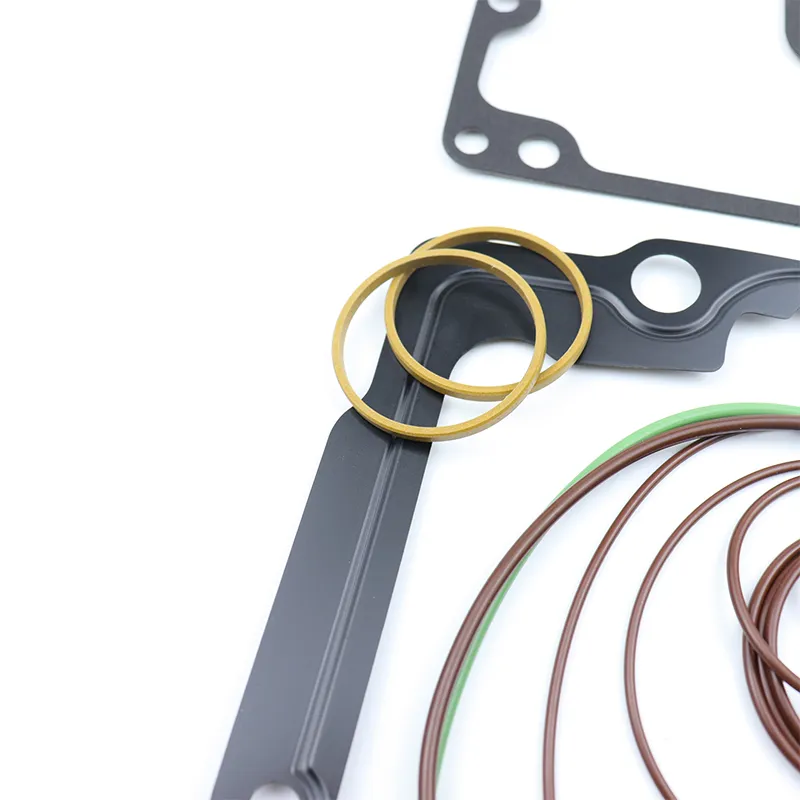Nov . 30, 2024 00:37 Back to list
wiper rod seal
Understanding Wiper Rod Seals A Comprehensive Overview
Wiper rod seals play a critical role in the functionality and longevity of hydraulic systems, particularly in applications involving hydraulic cylinders. As the name suggests, these seals are designed to wipe away contaminants and prevent them from entering the hydraulic system while also ensuring that hydraulic fluid does not leak out. In this article, we will explore the importance of wiper rod seals, their design features, common materials used, and best practices for maintenance.
The Importance of Wiper Rod Seals
In hydraulic applications, the presence of contaminants such as dirt, dust, and moisture can lead to significant wear and tear on internal components. Wiper rod seals act as the first line of defense against these harmful particles. By preventing contaminants from entering the cylinder, they help maintain the integrity of the hydraulic fluid, reduce wear on the cylinder walls, and improve overall system efficiency.
Furthermore, effective wiper rod seals contribute to safety in hydraulic systems. Leaks due to seal failure can lead to loss of pressure, which can compromise equipment operation and pose safety hazards to operators. Ensuring the integrity of wiper rod seals is, therefore, essential for both performance and safety.
Design Features of Wiper Rod Seals
Wiper rod seals are designed with specific features that enhance their sealing capabilities. Typically, they consist of two primary components the sealing element and the wiper lip. The sealing element is responsible for preventing fluid leaks, while the wiper lip is designed to clear away any debris or contaminants from the rod before they can enter the hydraulic cylinder.
The geometry of wiper seals can vary significantly based on application requirements. Common designs include straight-sided profiles or more complex shapes that provide better sealing performance under varying pressures and temperatures. Some wiper seals may also incorporate additional features, such as drainage grooves, which can facilitate the removal of trapped contaminants, further enhancing the life of the hydraulic system.
Materials Used in Wiper Rod Seals
The choice of material for wiper rod seals is crucial for their durability and effectiveness. Common materials include nitrile rubber (NBR), polyurethane, and fluorocarbon (FKM). Each material has its unique properties that make it suitable for specific applications.
1. Nitrile Rubber (NBR) This material is widely used for its excellent resistance to wear and abrasions, making it suitable for standard hydraulic applications. NBR seals are particularly effective in applications where temperature and pressure conditions are moderate.
wiper rod seal

2. Polyurethane Known for its elasticity and tensile strength, polyurethane is often used in high-performance applications. It offers excellent resistance to both abrasion and tears, providing longer service life in demanding environments.
3. Fluorocarbon (FKM) This material is selected for applications involving aggressive chemicals or extreme temperatures. FKM seals can withstand higher thermal stresses and are resistant to a wide range of fluids, making them ideal for specialized hydraulic systems.
Best Practices for Maintenance
To maximize the lifespan and effectiveness of wiper rod seals, regular maintenance is crucial. Here are some best practices to consider
- Inspection Regularly inspect seals for signs of wear, deformation, or damage. Early detection of issues can prevent more extensive damage to the hydraulic system.
- Cleaning Keep the rod and surrounding areas clean. The accumulation of dirt and debris can accelerate wear on seals and compromise their sealing ability.
- Lubrication Ensure appropriate lubrication where applicable. Proper lubrication can help reduce friction and wear on both the seals and the hydraulic components.
- Environmental Monitoring Be aware of the operating environment. High dust or moisture levels can impact seal performance. Consider using additional dust shields or protective measures when necessary.
Conclusion
Wiper rod seals are essential components in hydraulic systems that ensure efficiency, safety, and longevity. A thorough understanding of their design, materials, and maintenance practices will help in preventing costly failures and maintaining optimal performance in hydraulic applications. By ensuring these seals are in good condition, operators can enhance the reliability and safety of their hydraulic systems.
-
TCN Oil Seal Metal Ring Reinforcement for Heavy Machinery
NewsJul.25,2025
-
Rotary Lip Seal Spring-Loaded Design for High-Speed Applications
NewsJul.25,2025
-
Hydraulic Cylinder Seals Polyurethane Material for High-Impact Jobs
NewsJul.25,2025
-
High Pressure Oil Seal Polyurethane Coating Wear Resistance
NewsJul.25,2025
-
Dust Proof Seal Double Lip Design for Construction Equipment
NewsJul.25,2025
-
Hub Seal Polyurethane Wear Resistance in Agricultural Vehicles
NewsJul.25,2025
-
The Trans-formative Journey of Wheel Hub Oil Seals
NewsJun.06,2025
Products categories
















